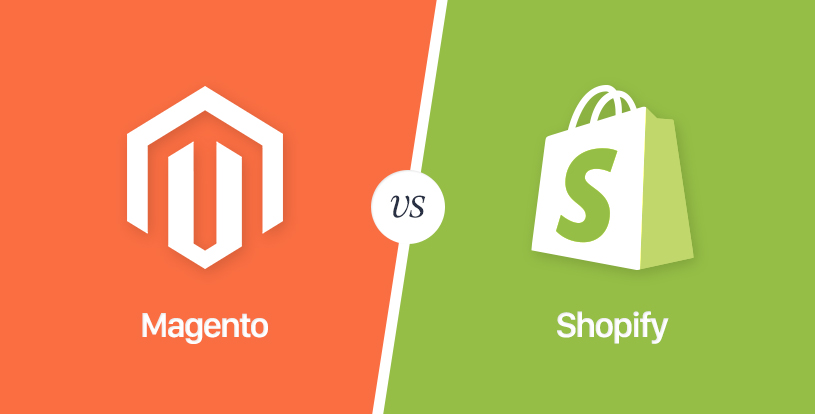Magento vs Shopify : Best Ecommerce Platform
Category: Tools | Posted date: 2019-08-06 08:27:58 | Updated date: 2019-08-07 06:34:23 | Posted by:

Magento and Shopify are two of the most common e-commerce website creation platforms. These platforms can assist you in designing a selling site from scratch. However, if it’s the first time you are going into online retail, you may be thinking which website is the best for you.
Here is the comparison between Shopify and Magento, based on their evaluation:
1. Management of Inventory
One of the most important aspects of any ecommerce business that desires to meet high standards and expectations of the customers is the Inventory space capacity. Shopify is intended to supply numerous packages where the starter pack ($14/month) limits the user to not more than 25 items as inventory. Therefore, all the other packages allow an infinite quantity of items to be included as inventory.
On the other side, since it is a free software, Magento offers an infinite amount of items to be placed in the inventory. The main distinction between the two platforms is that Magento is a free service website where your server and page loading speed can have an effect on your online store response and functionality.
2. Shipping Charges
Luckily, both Magento and Shopify provide flexible and structured options accessible for payment of shipping charges. Preferably, there is a weight and volume system that is utilized to get the final charges on shipped items. This is a basic necessity for purchasing and selling physical merchandise online as an ecommerce venture.
3. Payment Gateway Options
When it comes to payment gateway options, Shopify is one of the stores that possess the most credible and dependable gateways with up to 70 various options. Magento, on the other hand, has fewer numbers of payment gateway options, however this is probably to get a rise via 3rd-party add-ons.
4. Coupons and Discount Codes
There is no issuing of discount codes and coupons for the starter pack option on Shopify, even if it charges its users. Magento, on the other hand, offers various coupons and discounts for customer items across their entire functionalities.
5. Templates and Themes
Both Shopify and Magento are seen to possess advanced product options that enable the user to customise their themes and templates so that it will suit the desirable look for their ecommerce business. If you look closely, you’ll see that both websites provide free themes. But bear in mind that compared to Magento, Shopify has more modern-day themes. In addition, both websites provide premium themes where Shopify starts at $80, while Magento at $1. This manifest that Magento has a bigger advantage than Shopify when it comes to price.
6. Multilingual Capabilities
Magento looks to be more qualified than Shopify in this area because it provides in-built multilingual support. Shopify, doesn’t have available option for such feature aside from the utilization of third-party applications that has the same functions. Shopify also authorize the user to customise the code of their theme with simple and advance level interface.
7. Driving Traffic
Fortunately, both websites have very effective and competitive SEO tools. This implies that both platforms are great at driving traffic to your website and influencing your site conversion rate.
8. Flexibility and Functionality
After you set everything up for your ecommerce website, your customers will be needing an app for it and add-ons to enhance the functionality. Currently, Shopify has more than 100 various add-on and app options, while Magento has more than 5,000. Magento is an open source community forum that is why it has more options than Shopify.
Conclusion
Even though Shopify and Magento provides a strong and dependable ecommerce platform, you need to take note that Shopify is much easier to use because it already have a fully-managed and hosted platform, while Magento, even though it’s much cheaper, it requires a lot of technical work as a part of the store.
